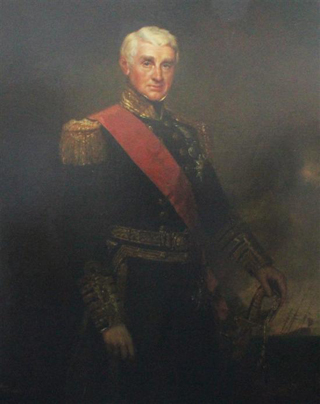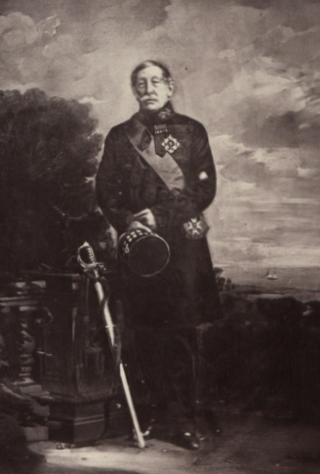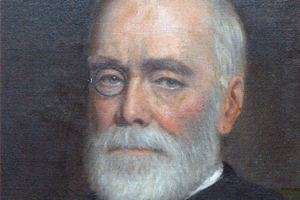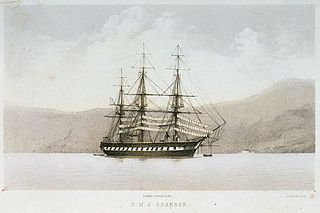
Kensal Green Cemetery is a cemetery in the Kensal Green area of North Kensington in the Royal Borough of Kensington and Chelsea and the London Borough of Hammersmith and Fulham in London, England. Inspired by Père Lachaise Cemetery in Paris, it was founded by the barrister George Frederick Carden. The cemetery opened in 1833 and comprises 72 acres (29 ha) of grounds, including two conservation areas, adjoining a canal. The cemetery is home to at least 33 species of bird and other wildlife. This distinctive cemetery has memorials ranging from large mausoleums housing the rich and famous to many distinctive smaller graves and includes special areas dedicated to the very young. It has three chapels and serves all faiths. It is one of the Magnificent Seven cemeteries in London.
Alexander McDonnell (1798–1835), sometimes spelled MacDonnell, was an Irish chess master, who contested a series of six matches with the world's leading chess player Louis-Charles Mahé de La Bourdonnais in 1834.

Louis Brennan was an Irish mechanical engineer and inventor.

Admiral of the Fleet Sir George Cockburn, 10th Baronet, was a Royal Navy officer and politician. As a captain he was present at the Battle of Cape St Vincent in February 1797 during the French Revolutionary Wars and commanded the naval support at the invasion of Martinique in February 1809 during the Napoleonic Wars.

Vice-Admiral Sir Robert John Le Mesurier McClure was an Irish explorer who explored the Arctic. In 1854 he traversed the Northwest Passage by boat and sledge, and was the first to circumnavigate the Americas.

Admiral Sir Henry Prescott was an officer of the Royal Navy who served during the French Revolutionary and Napoleonic Wars, and was later the Governor of the Newfoundland Colony.

Admiral of the Fleet Sir Thomas John Cochrane, was a Royal Navy officer. After serving as a junior officer during the French Revolutionary Wars, he captured the French ship Favourite off the coast of Dutch Guiana and then took part in various actions including the capture of the Virgin Islands from Danish forces, the capture of the French island of Martinique and the capture of the French archipelago of Îles des Saintes during the Napoleonic Wars. He also took part in the burning of Washington and the attack on Baltimore during the War of 1812.

Sir Edward Augustus Inglefield was a Royal Navy officer who led one of the searches for the missing Arctic explorer John Franklin during the 1850s. In doing so, his expedition charted previously unexplored areas along the northern Canadian coastline, including Baffin Bay, Smith Sound and Lancaster Sound.
Robert William Sievier FRS was a British engraver, sculptor and later inventor of the 19th century.
Colonel Daniel Mackinnon was a Scottish Colonel of the Coldstream Guards who played an important part at the Battle of Waterloo.

Field Marshal Sir Alexander George Woodford, GCB, KCMG, was a British Army officer. After taking part in the Anglo-Russian invasion of Holland, he served in most of the battles of the Napoleonic Wars. During the Hundred Days he commanded the 2nd battalion of the Coldstream Guards at the Battle of Quatre Bras, the Battle of Waterloo and the storming of Cambrai. He went on to become lieutenant governor and brigade commander at Malta, lieutenant governor and brigade commander at Corfu and then commander of the British garrison on the Ionian Islands before being appointed Governor and Commander-in-Chief of Gibraltar.

General Sir Walter Raleigh Gilbert, 1st Baronet, was an English army officer in the British East India Company.
Captain Sir Henry Duncan KCH, CB was a prominent Royal Navy officer of the early nineteenth century. The second surviving son of the highly regarded Admiral Adam Duncan, 1st Viscount Duncan, who defeated the Dutch Navy at the Battle of Camperdown in 1797, Duncan achieved a successful career in his own right, operating with great success against French and Italian shipping and shore fortifications in the Mediterranean during the Napoleonic Wars. For his services he was knighted and given numerous honours before dying at the young age of 49 from a sudden apoplexy in 1835.

George John Browne, 3rd Marquess of Sligo, styled Earl of Altamont until 1845, was an Irish peer.

HMS Shannon was a Liffey-class steam frigate of the Royal Navy.
John Horsley Palmer was an English banker and Governor of the Bank of England.

Henry Dundas Trotter (1802–1859) was a Scottish officer of the Royal Navy, who reached the rank of rear-admiral.
Henry St George Tucker (1771–1851) was an English financier and official of the East India Company. He was Accountant General in 1801 and again in 1805, and was Chairman of the Company in 1834 and 1847.

Alexander McDonald, M'Donald or MacDonald was a Scottish sculptor specialising in granite. He was also an expert on Egyptian granite sculpture.












